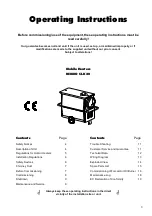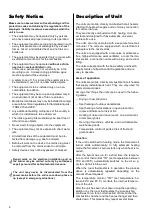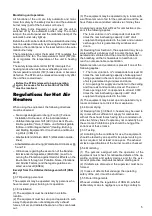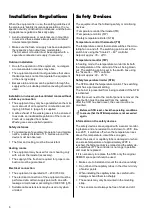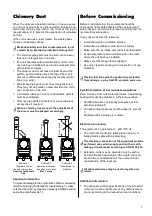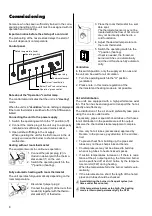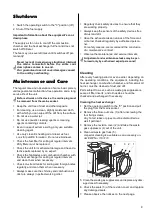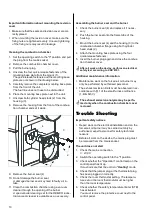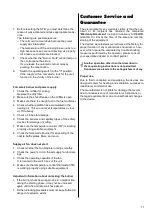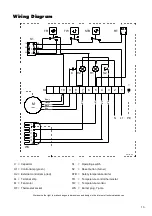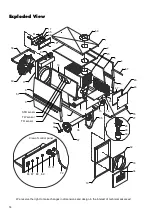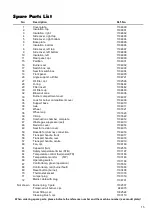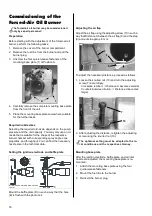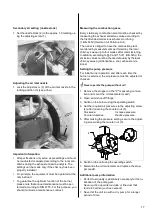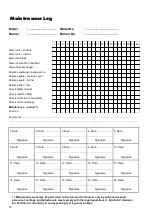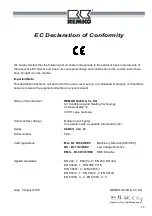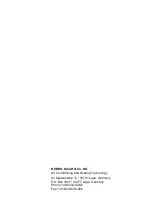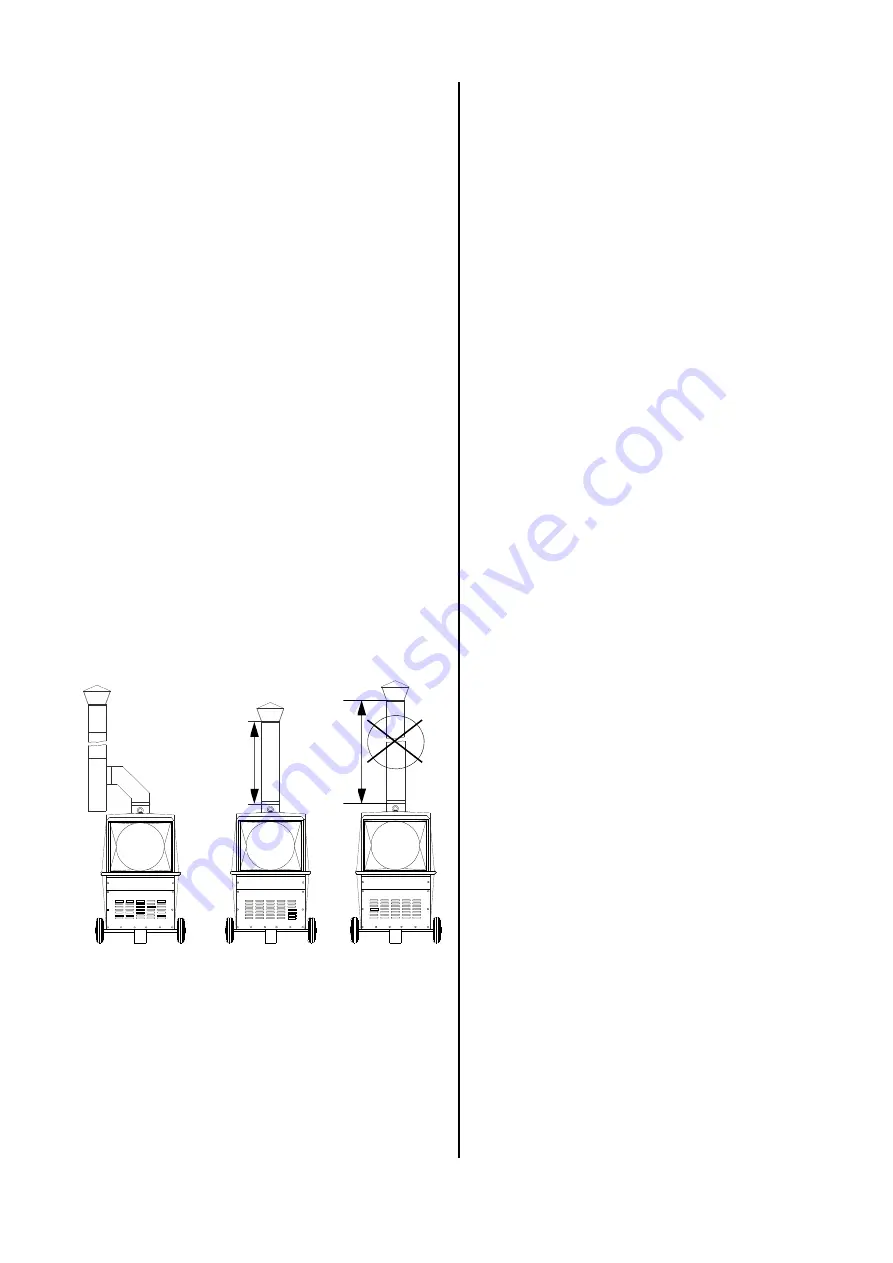
7
◊
The chimney pipe parts must be laid in such a way
that no counterpressure can arise.
◊
The unit operates without malfunctions if the chim-
ney has been installed at an incline and assembled
with vertical end pipes.
◊
The chimney duct must reach at least beyond the
gutters, but preferably above the top of the roof to
prevent counterpressure caused by weather condi-
tions (e.g. wind).
◊
All chimney pipe parts must be securely fastened.
They may not be smaller in diameter than the chim-
ney connection of the unit.
◊
A minimum distance of 0.6 m to flammable objects
must be maintained.
◊
Chimney pipe parts and fasteners are available as
accessories if required.
Chimney Duct
When the units are operated outside or in open spaces,
you do not need a chimney. We recommend using a one-
metre-long chimney pipe with a rain cover at the top to
(see Example 2) to prevent the penetration of rainwater
and dirt.
If the unit is used as a room heater, the waste gases
must be conducted outside.
Make absolutely sure that counterpressure is not
created by an improperly installed chimney duct.
Important information
To prevent damage to the combustion chamber caused by
moisture build-up (condensation) (see Example 3), make
sure that the chimney pipe has a properly installed conden-
sation trap (see Example 1).
Before Commissioning
Before commissioning, the equipment should be
checked for noticeable defects of the operating and
safety devices, as well as for proper mounting and cor-
rect electrical connection.
In any case, observe the following:
◊
Install the device on a stable surface.
◊
Guarantee a sufficient combustion air supply.
◊
Make sure the air intake and outlet is unobstructed.
◊
Avoid overpressure and underpressure in the room
where the unit has been installed.
◊
Make sure that enough fuel is supplied.
◊
Use only clean EL heating oil or diesel. Do not use
biodiesel.
Additional information
◊
The exhaust emission specifications of the forced-air
oil burner must be checked or set by authorised per-
sonnel according to the respective local conditions.
Paraffin formation at low outside temperatures
Even in case of low outside temperatures, free-flowing
heating oil must be available in sufficient quantities.
◊
Paraffin formation can already take place at tem-
peratures below 5°C.
◊
Corresponding measures must be taken to prevent
it.
Winterproof EL heating oil or diesel.
Electrical connection
The equipment is operated at 1~ 230 V/50 Hz.
◊
The electrical connection takes place using an in-
stalled mains cable with a safety plug
.
◊
Extension cords may be extended only by author-
ised electricians depending on the length of the ca-
ble and the connected load of the unit and under
consideration of the local use.
The electrical connection of the equipment must be
performed at a certain supply point with an earth-
leakage circuit breaker according to VDE 0100 § 55.
All cable extensions may be used only when un-
rolled.
Flexible fuel lines must be particularly protected
from damage, e.g. by forklifts, animals, and so on.
Example 1
Example 2
Example 3
Operation with ex-
tended chimney duct.
Requires condensate
trap.
Operation without ex-
tended chimney duct.
Max. 1 metre
Inadmissible in-
stallation
M
a
x
.
1
m
e
tr
e
O
v
e
r
1
m
e
tr
e
When a chimney duct is used, the adjustment of
the burner must be adapted accordingly.
Содержание CLK 20
Страница 2: ......



